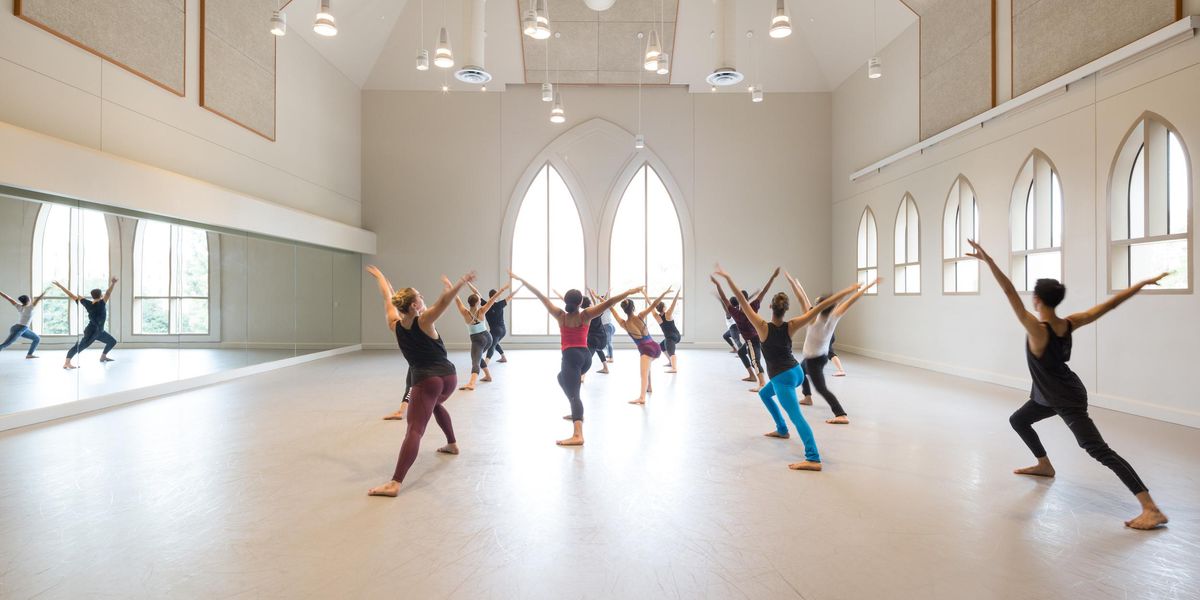Double Life: Madelyn Ho's Unconventional Path to Paul Taylor
Madelyn Ho, the most recent addition to the Paul Taylor Dance Company, could not have dreamed up a more exposing entrance during her first New York season. The curtain parted, and there she was, standing alone in the middle of the stage in a Victorian-inspired dress. The piece was Sullivaniana, a music-hall number set to catchy tunes from Gilbert and Sullivan operettas. By the end of the premiere, everyone was digging through the program to find her name.
Ho’s dancing has a crystalline purity, a crispness and speed that you just can’t miss. Though she’s a hair under five feet, she covers space in a flash. At the same time—and this is the trick—she never looks rushed. And she already has that essential Taylor quality: She looks like a real person onstage, part of a community of dancers and human beings.
Despite her evident gifts, it wasn’t always clear that dance would be her profession. The Texas native has long been torn between her love of movement and her equal devotion to academics, particularly science. She grew up taking ballet, which she was serious about but had no intention of pursuing professionally. “I knew I wouldn’t make it in the ballet world,” she says, “because of my stature, and because I just wasn’t good enough.” But she also knew she didn’t want to stop. So when the time came to go to college, she chose an institution that was not only academically rigorous, but also had good dance facilities: Harvard.
It was there that, as a junior, she was exposed to Paul Taylor’s work for the first time. Ruth Andrien, a member of the Taylor company from 1974–1983, came to set Aureole on the Harvard dancers. That experience led Ho to seek out the Taylor winter intensive in New York City. After graduation, she earned a spot in the junior company, Taylor 2.
“In college, I could do dance and science,” she says, but at that point “it did feel like I had to make a choice.” There were other considerations, too, like familial expectations. Her father, who emigrated to the U.S. from Taiwan in order to pursue his studies, was worried that she might be giving up an important opportunity by not continuing her schooling. But dance won out.
Then, after four years with Taylor 2, she got the itch to go back to the lab. “I felt like I was at a point where maybe I needed to start med school. And it was something I wanted, so it didn’t feel wrong.” She applied and got into Harvard Medical School. Once she began clinical rotations at the hospital, her studies became intense; she had to stop dancing altogether. She began to think about specializing in sports medicine with a focus in dance medicine.
During her third year of medical school, she made plans to travel to New York City to attend a few Taylor performances at Lincoln Center. Checking the website for tickets, she noticed an ad for auditions. She couldn’t resist. “I felt: I have to go. I need to do this.” Not long after completing her third year of medical training, she joined the company, at the age of 29.
Her first season was a whirlwind. The company toured South America and Europe, as well as the U.S. and Canada. She learned more than a dozen Taylor works. “It’s tough, going into these pieces that everyone knows,” she says. “I felt a little bit like a ping-pong ball.” She was also involved in the creation of three new dances, including two by outside choreographers (Larry Keigwin and Doug Elkins).
And then there was Sullivaniana, where she got to work one-on-one with the formidable Taylor, now 85. “It was a little bit trial by fire,” she reminisces, with a laugh. “He gave me general instructions, like ‘You’re looking for someone,’ and then said, ‘Just start in the center.’ ” Little by little he built her role, that of a young ingenue. She is the first person onstage, and the last.
Ho recalls the sensation of performing on the stage of the David H. Koch Theater for the first time: “I was so ecstatic, it was just uncontrollable. It was that sense of being totally present, totally aware of everything going on around, but not being fazed by it.” Medical school will have to wait.




